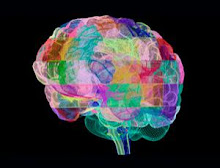First frictionless superfluid molecules created
CHILL them enough and some atoms creep up walls or stay still while the bowl they sit in rotates, thanks to a quantum effect called superfluidity. Now molecules have got in on the act.
Superfluidity is a bizarre consequence of quantum mechanics. Cool helium atoms close to absolute zero and they start behaving as a single quantum object rather than a group of individual atoms. At this temperature, the friction that normally exists between atoms, and between atoms and other objects, vanishes, creating what is known as a superfluid.
To see if molecules could be made superfluid, Robert McKellar of the National Research Council of Canada in Ottawa and colleagues turned to hydrogen, which exists as pairs of atoms. The team created a compressed mixture of hydrogen and carbon dioxide gas and shot it through a nozzle at supersonic speeds. Once released, the molecules spread apart, cooling and arranging themselves so that each CO2 molecule sat at the centre of a cluster of up to 20 hydrogens.
To test for superfluidity, the team shone an infrared laser at the clusters at wavelengths that CO2, but not hydrogen, can absorb. This set only the CO2molecules vibrating. Under normal conditions this movement would be slowed down due to friction between the moving CO2 molecules and the surrounding hydrogen. But the researchers found that for clusters of 12 hydrogen molecules, the hydrogen barely impeded the motion of the CO2.
They conclude that these hydrogen clusters are 85 per cent superfluid (Physical Review Letters, DOI: 10.1103/PhysRevLett.105.133401).
As hydrogen is only the second element known to form a superfluid, McKellar says the experiment could be useful for disentangling general qualities of superfluids.
Superfluid molecules might also be used as "nano-fridges", which surround and cool individual protein molecules. Superfluid helium atoms are already used for this but, unlike atoms, molecules can bend and stretch, which might present new ways to manipulate the cooled proteins.


No comments:
Post a Comment